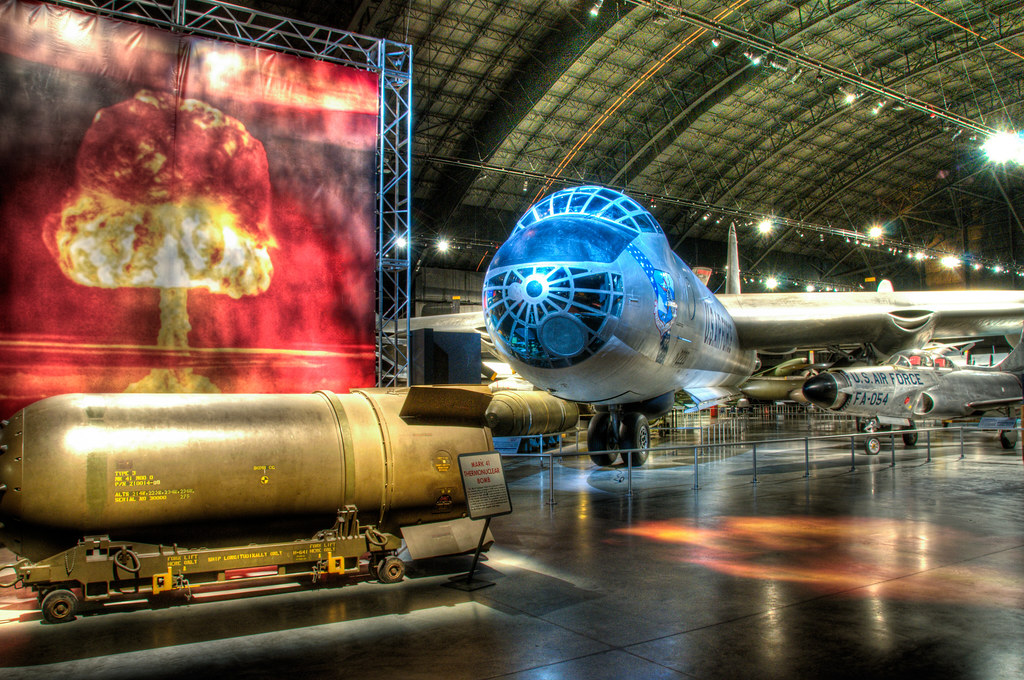
Entering into the Cold War Gallery is a unique experience. The Convair B-36J Peacemaker and the atom bomb (on the left you can see the Mark 41 and behind it the Mark 17 thermonuclear bombs) were counted on as America's major deterrents to aggression in the early days of the The Cold War.
Also visible in the picture is the Lockheed T-33A Shooting Star.
 The defense readiness condition (DEFCON) is a measure of the activation and readiness level of the United States Armed Forces. It describes progressive postures for use between the Joint Chiefs of Staff and the commanders of unified commands. DEFCONs are matched to the situations of military severity. Standard peacetime protocol is DEFCON 5, descending in increasingly severe situations. DEFCON 1 represents expectation of actual imminent attack, and is not known to have ever been declared. During the Cold War, DEFCON 1 was feared because it would most likely precede an all-out nuclear war. In November 1959, the Joint Chiefs of Staff created the DEFCON system so that a uniform readiness posture could be prescribed in the various military commands.
The defense readiness condition (DEFCON) is a measure of the activation and readiness level of the United States Armed Forces. It describes progressive postures for use between the Joint Chiefs of Staff and the commanders of unified commands. DEFCONs are matched to the situations of military severity. Standard peacetime protocol is DEFCON 5, descending in increasingly severe situations. DEFCON 1 represents expectation of actual imminent attack, and is not known to have ever been declared. During the Cold War, DEFCON 1 was feared because it would most likely precede an all-out nuclear war. In November 1959, the Joint Chiefs of Staff created the DEFCON system so that a uniform readiness posture could be prescribed in the various military commands. Since the system was introduced, portions of the U.S. military have been placed at higher readiness levels on numerous instances. The highest alert condition the US military has been confirmed to have been at was DEFCON 2. During the Cuban Missile Crisis on October 22, 1962, the US Armed Forces were ordered to DEFCON 3. On October 23, Strategic Air Command (SAC) was ordered to DEFCON 2, while the rest of the US military remained at DEFCON 3. SAC remained at DEFCON 2 until November 15. For much of the Cold War, US ICBM (Intercontinental Ballistic Missile) sites were at DEFCON 4 rather than 5. Higher alert conditions were also ordered during the 1973 Yom Kippur War. While the US military was technically at DEFCON 3 status during the Yom Kippur War, in certain theaters it operated under DEFCON 2 conditions as a show-of-force to repel Soviet naval vessels from entering the Bosporus Strait. The third time the United States reached DEFCON 3 was during the September 11, 2001 attacks.

No comments:
Post a Comment